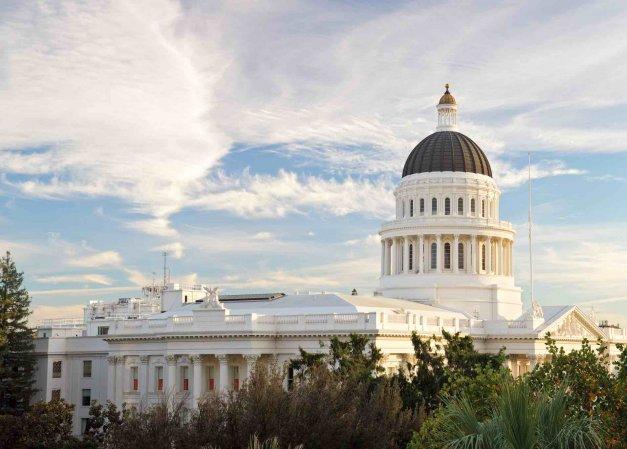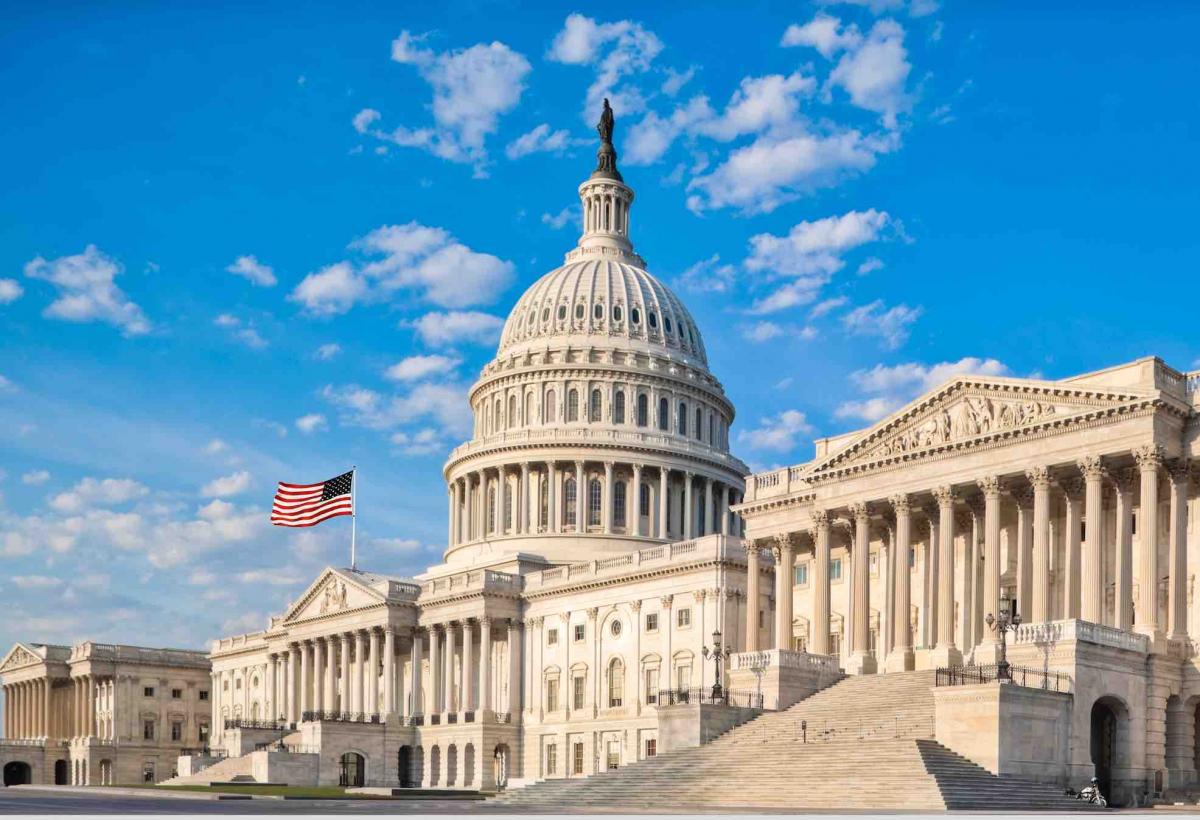2017 Legislative Year in Review
Dan Carrigg is deputy executive director and legislative director for the League and can be reached at dcarrigg@cacities.org.
The 2017 California legislative session became one of the most productive in memory, influenced in part by the disruptive tension created by the unanticipated outcome of the 2016 presidential election.
The divisions between California’s Democratic-dominated Legislature and the U.S. president on immigration, health care, federal budget proposals and climate change were stark, deep and emotional. The differences became evident the morning after the general election, when Assembly Speaker Anthony Rendon (D-Lakewood) and Senate President pro Tem Kevin de León (D-Los Angeles) issued this statement: “Today, we woke up feeling like strangers in a foreign land, because yesterday Americans expressed their views on a pluralistic and democratic society that are clearly inconsistent with the values of the people of California.”
As the fervor over proposed presidential executive orders and policies increased and congressional action stalled, state legislative leaders proclaimed that they would demonstrate how California and Democrats would continue to lead. And lead they did — enacting a massive transportation funding package in the spring, extending the cap-and-trade carbon reduction program in the summer and approving an affordable housing package and a park and water bond at the end of session. These ambitious and significant accomplishments required two-thirds votes and major efforts by Governor Jerry Brown and legislative leaders.
These accomplishments also matched city priorities. For a decade, the League had been advocating for additional transportation funding for local street and road maintenance. Obtaining affordable housing funding matched another League strategic priority, and many communities will benefit from the park and water infrastructure bond.
Yet all was not positive for cities as local control came under significant threat. The League successfully battled bills seeking to restrict local contracting authority and allow wireless companies to dictate uses of public property. With over 2,500 bills introduced during the session, the League represented city interests on many other issues to protect local control, revenue and flexibility.
Return of Democratic Supermajority and Other Legislative Changes
The presidential election was not the only disruptive change affecting the 2017 session. In California, Democrats regained a two-thirds supermajority control of both houses. In the 80-member Assembly, Democrats added three seats from 52 to 55, surpassing the two-thirds threshold of 54. In the 40-member Senate, they secured the necessary 27 seats. Democrats had also obtained supermajority status following the 2014 election, but it eroded quickly when criminal scandals caused the suspension of three senators.
With supermajority control, Democrats could enact tax increases,
approve urgency measures and place items on the ballot without
having to rely on Republican votes. Maintaining unity within
the caucus,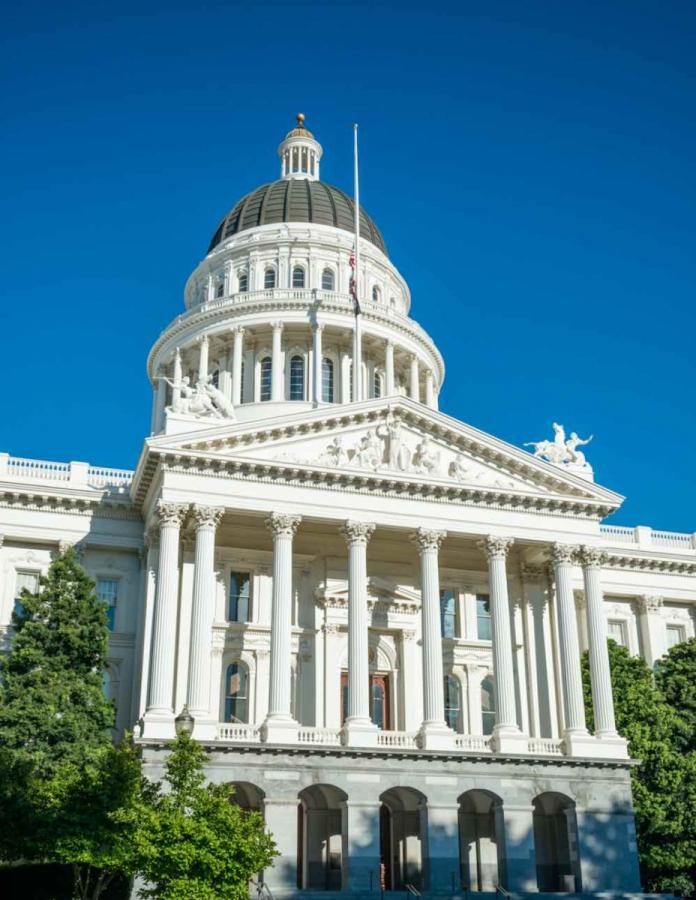 however, proved challenging.
Swing districts were vulnerable on tax votes, moderates were
sensitive to business concerns and individuals could leverage
other demands. Republicans had little power, but they served as a
conduit to their colleagues in control of Congress; this
influence became increasingly valuable as Democrats sought to
blunt President Trump’s aggressive proposals.
however, proved challenging.
Swing districts were vulnerable on tax votes, moderates were
sensitive to business concerns and individuals could leverage
other demands. Republicans had little power, but they served as a
conduit to their colleagues in control of Congress; this
influence became increasingly valuable as Democrats sought to
blunt President Trump’s aggressive proposals.
While Democratic leadership remained stable, Republican turnover occurred. Sen. Patricia Bates (R-Laguna Niguel), who can serve until 2022, became Senate Republican leader, replacing Sen. Jean Fuller (R-Bakersfield), who terms out in 2018. Assembly Republican Leader Chad Mayes (R-Yucca Valley) lost his position late in the session to Assembly Member Brian Dahle (R-Bieber). Mayes attempted to establish a moderate and pragmatic approach for his party but was criticized by conservatives for voting to extend the cap-and-trade program. His critics did not seem to appreciate how — despite a weak bargaining position — Mayes was able to secure concessions supported by business groups and bolster Republican leverage on future cap-and-trade allocations by placing ACA 1 on the June 2017 ballot, requiring a two-thirds vote on post-2024 allocations of auction revenues.
Factions also emerged among the Democrats. Tensions between progressives and pragmatists, evident in the presidential primary between Sen. Bernie Sanders and Hillary Clinton, surfaced again in a heated contest for party leadership. Rifts became personal when single-payer health care advocates attacked Assembly Speaker Rendon for requiring additional legislative review of their proposal estimated to cost $400 billion — double the funds in the state budget.
Transparency improved with the new “three-day print” rule required by Prop. 54 (2016) limiting “gut-and-amend” bills. With such antics blocked, some veteran lobbyists appeared disoriented during the final nights of the session. Nevertheless, this minimal level of transparency improves the legislative process and benefits policy-advocacy groups like the League by providing opportunities to react to harmful proposals.
State Budget Normal, But Concerns Remain Over Possible Federal Actions
With healthy state revenues, the budget reflected Gov. Brown’s proposals with minor modifications. Legislators were more worried about the impacts of the president’s agenda than quibbling over trivial details. California’s budget was vulnerable to a $20 billion annual cost increase due to the state’s prior decision to expand health-care benefits to millions of poor residents under the Affordable Care Act. The president’s proposed elimination of many programs, including Community Development Block Grants (CDBG) and HOME Investment Partnerships, generated additional concerns.
With action stalled in Washington, D.C., the Legislature adopted its FY 2017–18 budget package with total General Fund spending of $125.1 billion and $8.5 billion in the Rainy-Day Reserve. To address growing concerns over the state’s unfunded public pension liabilities, the state also made a $6 billion prepayment from cash reserves to the California Public Employees’ Retirement System (CalPERS).
The Legislature also took other higher-profile actions. Continued frustration with mismanagement at the state Board of Equalization (BOE) led to the transfer of most BOE tax programs, including the collection and allocation of local sales and use taxes, to a newly created Department of Tax and Fee Administration. Another trailer bill imposed rigorous signature verification and other process requirements on legislative recalls, responding to efforts by conservative activists to recall Sen. Josh Newman (D-Fullerton) over his vote for transportation funding.
For cities, larger issues included the allocation of $2.8 billion in transportation funds under the recently passed SB 1, the Road Repair and Accountability Act. The League and California Police Chiefs Association secured amendments to SB 94 (a cannabis trailer bill reconciling medical marijuana law with the recently enacted Prop. 64) that preserved as much as possible the integrity of the regulatory structure for cities and law enforcement. In addition, the League and police chiefs secured changes to AB 133, a follow-up cannabis trailer bill, that underscored the continuing need for local control after state licensing begins. The League also protected smaller cities’ interests by opposing a trailer bill that proposed cutting the economic development set-aside for small cities under the state’s CDBG program. The Legislature adopted a revised version of the bill, SB 106, that did not contain the proposed cut, and the state Department of Housing and Community Development (HCD) formed a task force with the affected cities on CDBG program issues.
Development and Passage of the Transportation Funding Package
The development of the transportation funding package took years
of work. California’s streets and roads were deteriorating due to
inadequate maintenance funding. The League and the
California State Association of Counties (CSAC)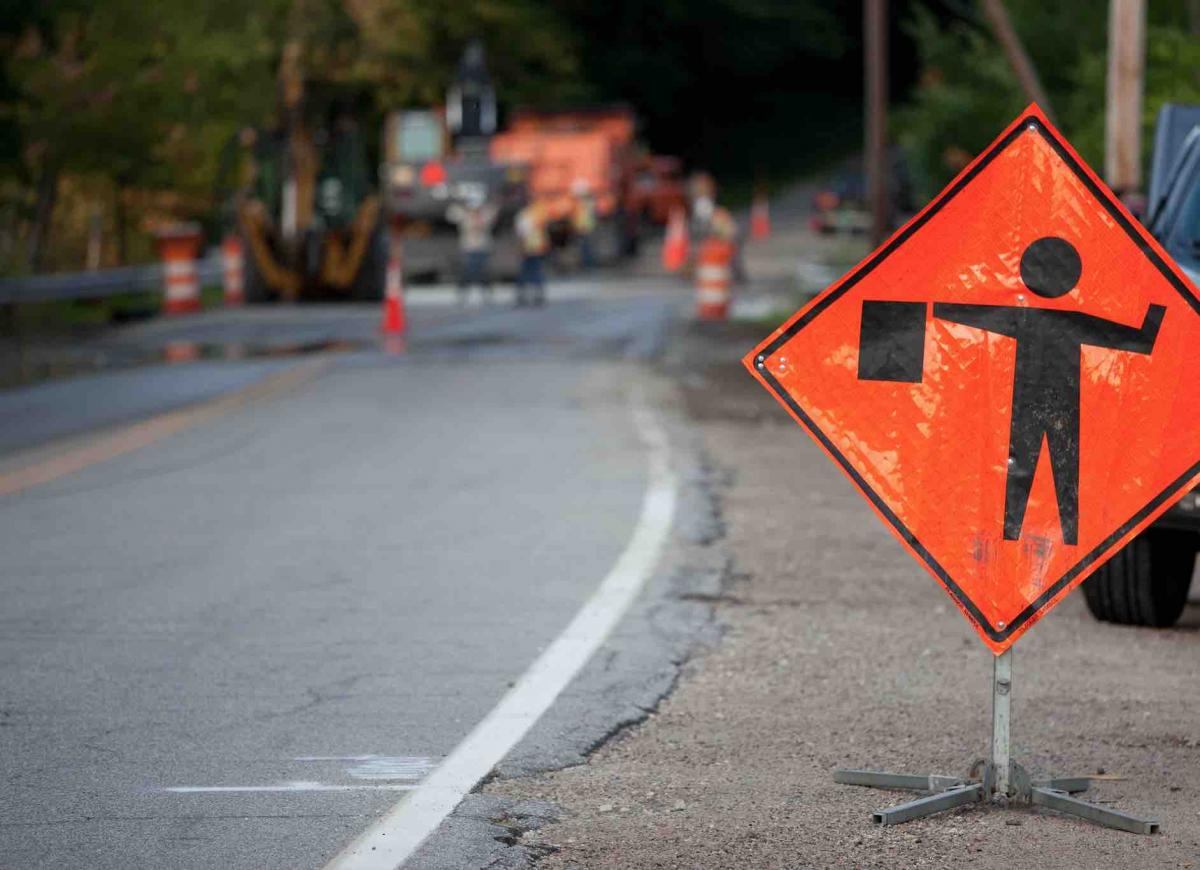 had documented the decline for a decade through biennial
surveys of local street and road conditions. Consumers were
seeing more potholes and cracks while incurring an estimated $762
dollars per year in related vehicle repairs. Ignoring this
problem made things worse because it costs eight times more to
rebuild a road than to properly maintain it.
had documented the decline for a decade through biennial
surveys of local street and road conditions. Consumers were
seeing more potholes and cracks while incurring an estimated $762
dollars per year in related vehicle repairs. Ignoring this
problem made things worse because it costs eight times more to
rebuild a road than to properly maintain it.
The reasons for the funding deficits were well known. Revenues dedicated to road maintenance were eroding. The state gas tax, which had last been increased in the 1990s, was not indexed for inflation. Fuel economy improvements also reduced consumption and per-gallon revenues. Drivers of electric and hybrid vehicles were not contributing equitably to road maintenance needs.
Maintaining roads is not an exciting topic, so the League, CSAC and other organizations joined forces as part of the Fix Our Roads Coalition and embarked on a multi-year effort to both educate and advocate for a comprehensive solution. The coalition also worked closely with Sen. Jim Beall (D-San José) and Assembly Member Jim Frazier (D-Discovery Bay), the chairs of the two legislative transportation committees, who led an effort to help their colleagues develop an understanding of the issues. In addition, the coalition convened meetings with various stakeholders, legislative leaders and state transportation representatives. The coalition also developed a website with educational resources, authored editorials and held regional press conferences to build awareness of the problems and support for additional investments.
Finally, an agreement materialized in 2017. The Road Repair and Accountability Act of 2017, SB 1 (Beall, Chapter 5, Statutes of 2017) and ACA 5 (Frazier, Chapter 30, Statutes of 2017), combines dedicated funding with strong accountability measures. SB 1 provides an additional $5.4 billion annually for the state and local transportation system, of which $1.5 billion is dedicated to city and county street and road repairs. For cities, it doubles the amount of road maintenance funds they will receive to fix their streets. ACA 5, scheduled to appear on the June 2018 ballot, provides constitutional protection to ensure several new revenue sources will be used only for transportation purposes.
Securing the final votes for this package proved difficult. Gov.
Brown’s leadership was critical, along with the efforts of
Assembly Speaker Rendon and Senate President pro Tem
de León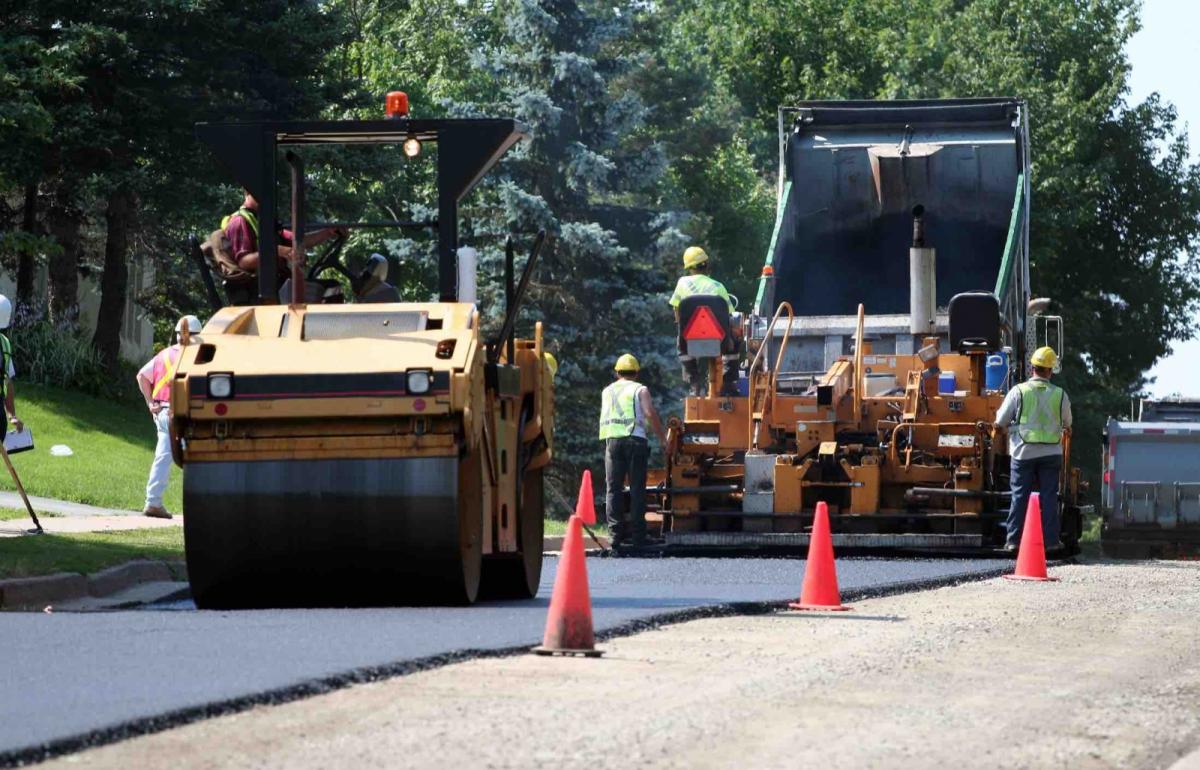 who made developing a
solution a priority for their caucuses. Sen. Anthony Cannella
(R-Ceres) provided the 27th vote in the Senate. The League thanks
all legislators who cast the courageous votes to address this
growing problem.
who made developing a
solution a priority for their caucuses. Sen. Anthony Cannella
(R-Ceres) provided the 27th vote in the Senate. The League thanks
all legislators who cast the courageous votes to address this
growing problem.
When presented with the League’s Distinguished Legislative Leadership Award before 1,800 city officials at the League’s annual conference, both Sen. Beall and Assembly Member Frazier recognized the work of the League and city officials in accomplishing the transportation package deal. Sen. Beall said, “Thanks to the effective advocacy of the League of California Cities and other partners, we are now able to increase our investment in transportation infrastructure maintenance to ensure California’s highways, streets and bridges will meet the demands of a 21st century economy.” Assembly Member Frazier added, “The League of California Cities was an integral part of a coalition that worked hard to get the package passed.”
Since the passage of SB 1 in April, the League worked closely with the California Transportation Commission and other state entities on the rollout of new transportation revenues. Updates, webinars and annual conference panels conveyed the details to city officials. The League and CSAC also sponsored helpful cleanup language to SB 1 in AB 135 (Chapter 255, Statutes of 2017), a budget trailer bill passed in September. New revenues will begin flowing to local agencies early in 2018.
But the League’s advocacy work on trans-portation funding is not over. ACA 5, which contains various constitutional protections for the new funding, is scheduled for the June ballot. Regrettably, several proposed ballot measures seeking to repeal SB 1, while proposing no alt-ernative funding solutions to address the problem, have also been filed. The League and the Fix Our Roads Coalition will continue to educate and advocate on the importance of funding to support local road maintenance needs.
Recent Battles Expose Ongoing Threats to Local Authority
The idea of eliminating cities’ and counties’ ability to contract for service delivery or of allowing private telecommunications companies to install their equipment on public property and without local community input and approvals would not make sense to the average voter. But in the halls of the state Capitol, when such ideas are backed by powerful interests, they can prove difficult to stop. Examples of this include:
- AB 1250 (Jones-Sawyer). After a major battle led by the League in partnership with the California Contract Cities Association to remove the application of this labor-sponsored bill to cities’ contracting authority, this bill still continued (applying only to counties) all the way through the Senate, where it is pending in the Senate Rules Com-mittee as a two-year bill that can be acted upon in 2018.
- SB 649 (Hueso). Despite opposition by the League, hundreds of cities and many counties and editorial boards, the bill moved through the Legislature with little resistance. Backed by the powerful telecom industry, which hired many lobbyists for the effort, the bill passed the Senate Floor 32-1 in May, passed the Assembly Local Government Committee 6-2 in June, passed the Assembly Communications and Conveyance Committee 10-0 in July and the Assembly Appropriations Committee 12-1 in September. The presence of 1,800 city officials in Sacramento attending the League’s 2017 Annual Conference & Expo during the final three days of the legislative session helped limit the floor votes to 46-16 in the Assembly and 22-10 in the Senate. Rather than the Legislature holding the flawed measure, it took the experience and leadership of Gov. Brown to state in his veto message what many legislators already knew: “I believe that the interest which localities have in managing rights of way requires a more balanced solution than the one achieved in this bill.”
One of the arguments for expanding legislative term limits was that the Legislature would become a more deliberative and thoughtful policy-making body. The rapid passage of bills such as AB 1250 and SB 649 through the Legislature raises questions about when that will occur and underscores the continued vulnerability of local authority in a legislative environment where the desire to appease a powerful interest group can erode public policy. City officials should urge their legislators to resist taking hasty action on policy proposals of such importance and consequence to their communities. The successful efforts to protect city authority on these bills demonstrate the collective power of cities when they work together.
Affordable Housing Package: Funding, Tools and Incentives
On a bright September morning in San Francisco, a group of legislators and housing advocates gathered on a hilltop to celebrate Gov. Brown’s signing a 15-bill package responding to California’s affordable housing crisis. The ceremony capped an active legislative year, with over 130 housing-related bills introduced.
Many San Francisco Bay Area legislators attended the ceremony, reflecting the intense regional housing demand driven by a booming economy. Highly skilled technology workers earning generous salaries were bidding up rents and home prices. Housing prices had also rebounded in Southern California’s coastal regions but less so in the Central Valley and Inland Empire, which experienced the brunt of the foreclosure crisis during the Great Recession and a slower economic recovery.
For cities, major positive developments included the restoration of affordable housing funding via two League-supported measures. SB 2 (Chapter 364, Statutes of 2017) by Sen. Toni Atkins (D-San Diego) will generate approximately $250 million per year for affordable housing from a $75 to $225 tax on certain real estate-related transactions. Initial funding will be available to assist local governments with updates to their General Plans, with an ongoing 70 percent dedicated to local government housing programs.
SB 3 (Chapter 365, Statutes of 2017) by Sen. Beall places a $4 billion affordable housing bond on the November 2018 ballot. Another helpful measure, AB 1598 (Chapter 764, Statutes of 2017) by Assembly Member Kevin Mullin (D-South San Francisco), authorizes a city/county to create an affordable housing authority with various powers and dedicate a portion of its property-tax increment, sales tax and other revenues to develop affordable housing. AB 1568 (Chapter 562, Statutes of 2017) by Assembly Member Richard Bloom (D-Santa Monica) authorizes enhanced infrastructure financing districts to use sales tax revenue under certain conditions to help fund affordable housing.
These investments and tools, however, only partially fill the vacuum created by the elimination in 2011 of local redevelopment agencies that provided over $1 billion annually for affordable housing.
The League appreciates Sen. Richard Roth (D-Riverside) for authoring League-sponsored SB 540 (Chapter 369, Statutes of 2017), which strikes a balance between inclusive local planning and improved certainty for housing developers. The measure authorizes the creation of Workforce Housing Opportunity Zones, where upfront local planning and environmental analysis under the California Environmental Quality Act (CEQA) will provide housing developers additional certainty. Another option is provided by League-supported AB 73 (Chapter 371, Statutes of 2017), by Assembly Member David Chiu (D-San Francisco), which offers state financial incentives to local agencies that adopt Housing Sustainability Districts approved for a 10-year period by HCD. League-supported AB 1505 (Chapter 376, Statutes of 2017) by Assembly Member Bloom contained a long-sought legislative fix to the 2009 Palmer v. City of Los Angeles decision, restoring local authority to require inclusion of affordable units in new rental housing developments.
Other measures focused on the local planning and approval process:
- SB 35 (Chapter 366, Statutes of 2017) by Sen. Scott Wiener (D-San Francisco) requires multifamily developments consistent with existing local planning requirements that meet specific conditions to be approved in a “ministerial” fashion, which means lacking project-level environmental review and public input, in jurisdictions where housing is not developed for all income levels at sufficient volume to match state-generated regional housing need allocations;
- AB 72 (Chapter 370, Statutes of 2017) by Assembly Member Miguel Santiago (D-Los Angeles) provides HCD with broad authority to review any action by a city or county that it determines is inconsistent with an adopted housing element;
- AB 1397 (Chapter 375, Statutes of 2017) by Assembly Member Evan Low (D-Campbell) limits sites that can be designated in a housing element to those that meet a debatable “realistic and demonstrated potential”;
- SB 167 (Chapter 368, Statutes of 2017) by Sen. Nancy Skinner (D-Berkeley) and AB 678 (Chapter 373, Statutes of 2017) by former Assembly Member Raul Bocanegra (D-San Fernando) make numerous changes to the Housing Accountability Act that include requiring findings to be based on “a preponderance of evidence” and imposing ($10,000) fines on cities that fail to comply with a judge’s order; and
- AB 879 (Chapter 374, Statutes of 2017) by Assembly Member Tim Grayson (D-Concord) requires HCD to study and make recommendations to substantially reduce developer fees via potential amendments to the Mitigation Fee Act, the law that outlines the constitutional baseline local governments use to establish fees.
Other Economic and Policy Issues Affecting Housing Production
While many view the 2017 housing package as helpful, its passage certainly does not signal the end of the policy discussion. Aside from various incentive and funding measures, a portion of the housing package responded to a theme, championed by several advocacy groups and academics, that the local planning and approval process is the major cause of the state currently producing 100,000 fewer units per year than pre-recession levels. From a local government perspective, that assertion is incomplete and inaccurate. Going forward, it is time to dig a bit deeper.
This legislative focus lacked an exploration of other economic factors affecting the housing market. The foreclosure crisis resulted in displaced homeowners with damaged credit, increasingly stringent lending criteria and widespread investor conversions of foreclosed single-family units into rentals. Demographic factors may also affect demand as baby boomers with limited retirement savings and increased health-care costs approach retirement age. Younger residents, saddled with student debt, face challenges saving for home down payments. Manufacturing and other higher-wage jobs are stagnating and being replaced via automation and conversion to a lower-wage service economy. And fewer skilled construction workers are available after many switched occupations during the recession.
Housing production and costs can also be affected by other state laws intended to advance important policies:
- Local Agency Formation Commissions tighten annexation and service provision requirements;
- The Coastal Act subjects coastal development to rigorous regulatory review;
- The Williamson Act (the California Land Conservation Act) discourages development on agricultural lands;
- Other laws ensure adequate water supplies, protect oak trees and avoid construction in floodplains;
- Residents displaced by governmental repairs of dilapidated housing stock are provided relocation benefits;
- Prevailing wages are required for affordable housing construction;
- New energy, seismic, fire, access for people with disabilities and other code requirements increase building costs;
- CEQA compliance can result in delays and costly litigation; and
- Propositions 13 (1978), 218 (1996) and 26 (2010) limit local ability to fund and maintain infrastructure and provide services to new residents.
Regarding funding for affordable housing, SB 2 and SB 3 will certainly be helpful, yet additional funding is sorely needed. Historically, the federal government funded most of the affordable housing available to lower-income households constructed nationwide. Since the 1980s, however, much of that funding has dried up, leaving states and local agencies to fill the void. In California, the funding once available from local redevelopment agencies is gone.
Local governments need additional tools and options. ACA 4 (Aguiar-Curry) would lower the vote threshold for local infrastructure and affordable housing investments to 55 percent, and ACA 11 (Caballero) proposes placing before the voters a proposed quarter-cent sales tax increase for affordable housing, which would generate another $1.7 billion per year, an amount that would begin to move the needle on this issue. The state could also support local investments in affordable housing and infrastructure by more fully restoring the tax-increment financing tool.
$4 Billion Parks and Water Bond Approved for June Ballot
The affordable housing crisis was not the only legislative priority with respect to bonds. Senate President pro Tem de León had worked on a park bond proposal for several legislative sessions. In 2016, Assembly Member Eduardo Garcia (D-Coachella) also authored a park bond proposal that made it all the way to the Senate floor. But apart from a water bond, the governor had resisted new bond proposals after spending years paying down the state’s accumulated debts. Thus, without the governor’s agreement, the state ballot presented the only available path.
In 2017, both Sen. de León and Assembly Member Eduardo Garcia introduced school bond proposals in the $3 to $4 billion range, while outside groups began crafting park bond initiative proposals for much larger amounts. Pressure for a housing bond and broader concerns over infrastructure conditions following the collapse of the Oroville Dam’s spillway increased the possibility of an agreement.
Throughout the year, the League was active in hearings and discussions and lobbied for the inclusion of $425 million for per capita allocations for individual cities with a $200,000 minimum. In the final weeks of the session, an agreement was reached with Gov. Brown on SB 5 (de León, Chapter 852, Statutes of 2017), a $4 billion park and water bond that contains a minimum of $200,000 per city in park funding, $725 million for “park-poor” communities and additional funding for state park improvements, nature conservancies, climate and environmental programs, flood control, Salton Sea improvements and drought and drinking water projects. The bond will be placed before voters on the June 2018 ballot.
Cap-and-Trade Program Extended to 2030
Gov. Brown, reflecting a national trend, also used Twitter as he lobbied for the holdout votes needed to extend the state’s cap-and-trade program. In mid-July, the 79-year old governor — who has spent nearly 40 years in California politics — tweeted: “This isn’t about some cockamamie legacy. This isn’t for me, I’m going to be dead. It’s for you & it’s damn real.”
California leadership in the carbon reduction effort began with the passage of AB 32 (Chapter 488, Statutes of 2006), authored by then-Assembly Speaker Fabian Núñez and signed by Gov. Arnold Schwarzenegger, which established the goal to reduce the state’s carbon emission levels to 1990 levels by 2020. As a centerpiece of its compliance strategy, the California Air Resources Board (CARB) enacted the cap-and-trade program, holding auctions where carbon-emitting industries could bid for emissions credits under a progressively lowering statewide cap. The auctions produced billions in revenue that the Legislature allocated to various programs, including high-speed rail. Litigation filed by the California Chamber of Commerce, however, challenged the program as an illegal tax because it had not been enacted with a two-thirds vote.
Uncertainties grew over whether the program would continue given the pending litigation and a failed legislative effort to extend the program in 2015. Nevertheless, in the waning hours of the 2016 session, Gov. Brown and legislative Democrats crafted an agreement by majority vote to approve SB 32 (Pavley, Chapter 249, Statutes of 2016), which expanded the state’s carbon reduction goal to 40 percent below 1990 levels by 2030. A concurrent effort, however, to extend the cap-and-trade program by a two-thirds vote stalled.
In 2017, the political dynamics changed. The California Chamber of Commerce’s case lost at the appellate level in April. SB 32 provided CARB the authority to impose reductions, and business and industry preferred a market-based pro-gram rather than CARB regulations. Also, given the warming interest of the business community in a compromise, some Republicans indicated a willingness to vote for a package addressing business priorities.
The Legislature reached bipartisan compromise on a three-bill package prior to the summer recess:
- AB 398 (E. Garcia, Chapter 135, Statutes of 2017) extends the cap-and-trade system through Dec. 31, 2030, with various modifications;
- AB 617 (C. Garcia, Chapter 136, Statutes of 2017) requires CARB to develop a uniform statewide system for annual reporting and monitoring stationary sources of emissions and toxic air contaminants and provides CARB and air districts additional enforcement powers; and
- ACA 1 (Mayes, Chapter 105, Statutes of 2017), is set to appear on the June ballot and requires a legislative two-thirds vote to allocate cap-and-trade auction proceeds after Jan. 1, 2024.
With the cap-and-trade program extended, an agreement to allocate accumulated auction revenues occurred with the passage of budget bills AB 109 and AB 134. These measures distribute $1.5 billion to various carbon-reducing activities including urban greening, waste diversion, fleet modernization and clean vehicle rebates. Sixty percent of the funding will continue to be allocated per established formula for the Affordable Housing and Sustainable Communities program, high-speed rail, the Transit and Intercity Rail Capital program and Low Carbon Transit Operations.
Local Authority Trimmed Over Transportation: Taxis and TNCs
The League engaged on two measures reflecting the effects of disruptive change on taxis and transportation network companies (TNCs). State law required taxis to be subject to significant local regulation. Then TNCs like Uber and Lyft came along offering services provided by individuals and promoting them as better, faster, cheaper and unconstrained by local regulation. Predictably, TNCs rapidly expanded and taxi use nosedived.
AB 1069 (Low, Chapter 753, Statutes of 2017), sponsored by taxi companies, was aimed at reducing what they perceived as the excessive costs and duplicative and restrictive local regulations that applied to their industry while TNCs that were providing a similar service were virtually unregulated. The League proposed amendments — supported by the cities active on the bill — to limit local regulation and licensing requirements to the top three jurisdictions where a taxi operates. The author and sponsors, however, rejected that approach and limited the licensing requirement to jurisdictions where the primary business address of the company or driver is located and to the jurisdiction within a single county where the largest share of trips originate for the company or driver. To protect other cities impacted by the taxi’s activities, the League unsuccessfully requested a veto. The new law takes effect in 2019.
SB 182 (Bradford, Chapter 769, Statutes of 2017) was sponsored by TNCs concerned that individual cities and counties would impose a patchwork of local business license requirements on their drivers who operate as independent contractors. In California, however, only a handful of cities had sought to impose business license requirements on drivers. San Francisco was a major exception. With an estimated 40,000 TNCs operating on its streets, the city had imposed business license requirements on drivers and engaged in various regulatory and legal disputes with the TNCs. Fearing that such regulatory efforts could spread to other cities, SB 182 was aimed at limiting the application of business license authority to TNC drivers. The League opposed the bill and requested a veto after amendments limited local business license authority to areas where the drivers lived, because of the lack of nexus to where actual business activity — as in San Francisco — was occurring. Unfortunately for cities, Gov. Brown signed the measure.
Long-Sought Fix for Struggling Newly Incorporated Cities
After many prior attempts supported by the League, four recently
incorporated cities in Riverside County — Eastvale, Wildomar,
Menifee and Jurupa Valley — finally received a long-needed
permanent fix to their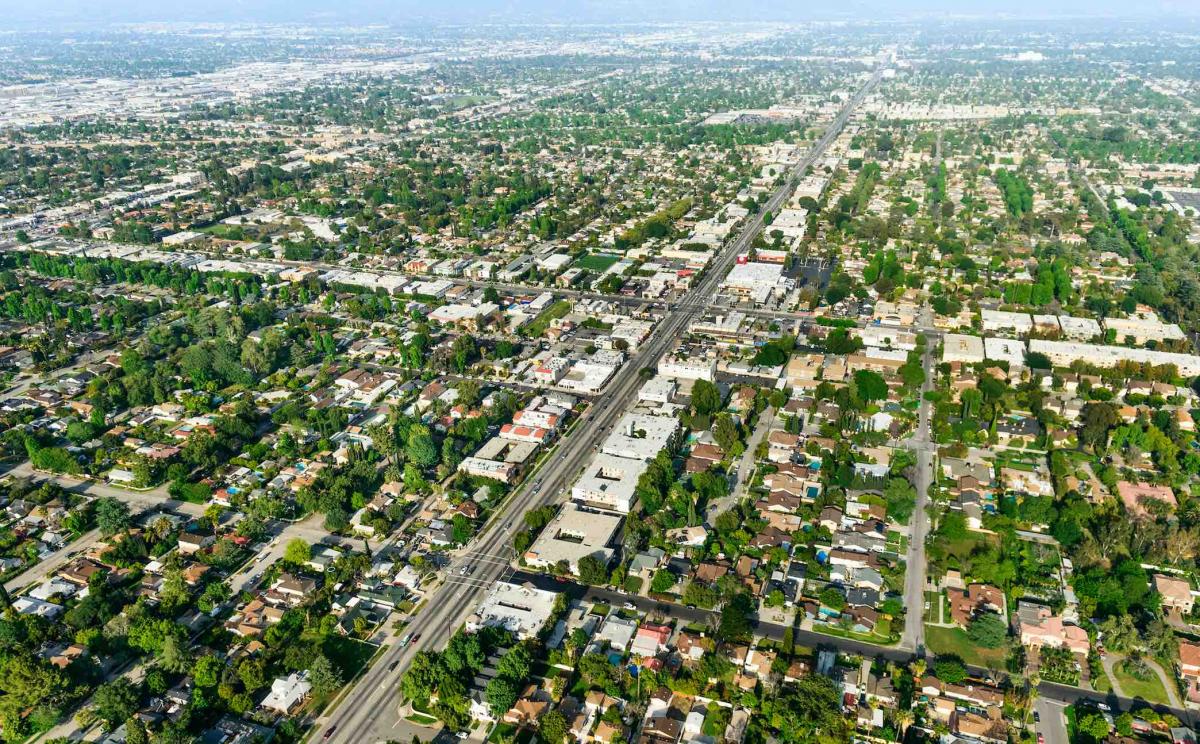 revenues with the
passage of SB 130 (Chapter 9, Statutes of 2017), a budget trailer
bill. These cities have experienced severe financial hardship
since 2011, when the state swept away all remaining shares of
city vehicle license fee (VLF) revenues with the passage of SB 89
(Chapter 35, Statutes of 2011). While all cities were affected by
the loss of city shares of the VLF, these four cities were
particularly hard hit because they relied much more on the VLF
revenues than other cities.
revenues with the
passage of SB 130 (Chapter 9, Statutes of 2017), a budget trailer
bill. These cities have experienced severe financial hardship
since 2011, when the state swept away all remaining shares of
city vehicle license fee (VLF) revenues with the passage of SB 89
(Chapter 35, Statutes of 2011). While all cities were affected by
the loss of city shares of the VLF, these four cities were
particularly hard hit because they relied much more on the VLF
revenues than other cities.
Restoring funding and avoiding the potential disincorporation of these new cities also provides long-term policy benefits to the state. The four affected cities are in one of the fastest-growing regions of California. City land-use patterns are urban and dense, and their future growth is regulated by Local Agency Formation Commission (LAFCO) policies. In contrast, unincorporated development patterns are typically less dense and not regulated by LAFCOs. The League thanks Sen. Roth and Assembly Member Sabrina Cervantes (D-Riverside) for their lobbying efforts with Gov. Brown.
Although SB 130 does not resolve issues associated with future incorporations and annexations of inhabited territory caused by SB 89, it establishes a policy platform to do so going forward.
Lack of Action on Public Safety Concerns With Recently Released Offenders
It is becoming harder to find a city official who does not express concerns over an uptick in crime related to a series of state actions and recently adopted policy changes that are resulting in more offenders being released onto the streets and limiting the deterrent effects of laws related to various crimes. The League supported several measures in response to these concerns, but most failed to move in the Legislature. Gov. Brown’s veto of AB 1408 (Calderon), which sought to improve public safety through better management of ex-offenders subject to post-release community supervision, disappointed the League. Frustrations are building on this issue as local officials continue to face demands for a response to public safety concerns in their communities.
Issues for 2018
Many factors will influence the 2018 legislative session. Gov. Brown will be in the final year of his term and is expected to finish strongly, leaving his imprint on the state’s budget and policy matters. Campaigns to replace him are well underway with candidates offering voters potential directions for the state’s future. Senate President pro Tem de León is facing term limits and running for the U.S. Senate, so Sen. Toni Atkins will transition into the Senate leadership role, and the Democrats’ supermajority status depends on the outcome of the recall of Sen. Josh Newman. Continued tensions over federal government policy proposals and actions remain a certainty.
Ballot proposals will also occupy political space. Three significant measures are qualified for the June ballot, each with its own politics: ACA 5 (Frazier) provides additional protection to recently enacted transportation funds; ACA 1 (Mayes) imposes a two-thirds vote of post-2024 allocations of cap-and-trade funds; and SB 5 (de León) proposes a $4 billion park and water bond. The housing bond, SB 3 (Beall), is qualified for the November ballot, but interest groups have many other proposals in development, including efforts to repeal recently enacted transportation funding and protect public safety.
In the policy arena, continued efforts to address affordable housing and homelessness can be expected, including reviving options for local rent control. Recreational marijuana regulations take effect in 2018. Financial difficulties for cities are increasing as pension costs escalate and affect fiscal sustainability and service delivery. Discussions are expected on water conservation and energy policy, responding to the devastating 2017 wildfires and crafting a more balanced telecom bill. Unknown elements for 2018 include the state budget. Besides the major vulnerabilities with federal tax reform proposals and potential changes to the Affordable Care Act, at some point the economy will slow and reduce state revenues.
Whatever comes, the League remains a staunch advocate for the benefits of local control and flexibility and will continue to support cities in their efforts to address urgent needs, provide vital services and enhance the quality of life for their residents. As always, cities are stronger when they work together.
Photo credit: Drnadig (US Capitol); Dszc (California Capitol); Jill_InspiredByDesign (road sign); Kozmoat98 (road crew); FrozenShutter (city panorama); Golero (apartment building); Ron_Thomas (park); Dszc (city aerial); Juhla (marijuana field).
This article appears in the January 2018 issue of Western
City
Did you like what you read here? Subscribe
to Western City

